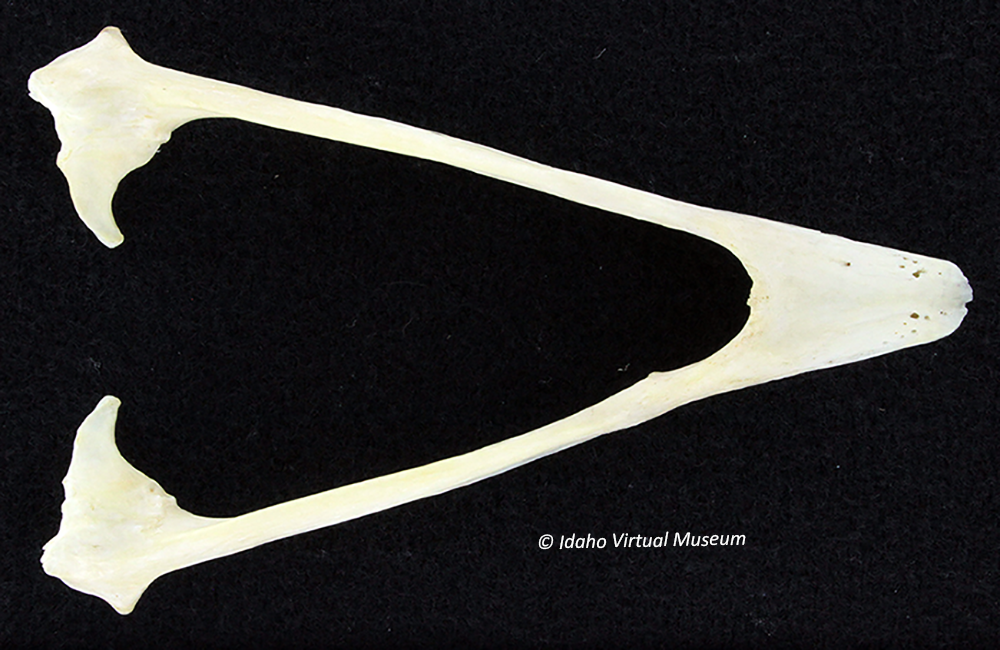 lower jawbone of the beak; long open triangular shape with a short fused section at the tip; in Bald Eagles narrower than the maxilla which surrounds its sides when the beak is closed; articulates dorsally with the same bone (the quadrate) that moves both the mandible and the maxilla to open and close the beak; bone is covered by a layer of tissue with blood vessels and nerves, and sheathed on the lower side by a thick hard covering of beta-keratin, which is harder than the alpha-keratin found in mammals; photo from ventral (underneath) side © Idaho Virtual Museum as licensed by Creative Commons
lower jawbone of the beak; long open triangular shape with a short fused section at the tip; in Bald Eagles narrower than the maxilla which surrounds its sides when the beak is closed; articulates dorsally with the same bone (the quadrate) that moves both the mandible and the maxilla to open and close the beak; bone is covered by a layer of tissue with blood vessels and nerves, and sheathed on the lower side by a thick hard covering of beta-keratin, which is harder than the alpha-keratin found in mammals; photo from ventral (underneath) side © Idaho Virtual Museum as licensed by Creative Commons

You must be logged in to post a comment.